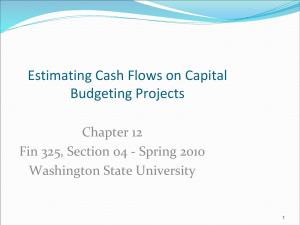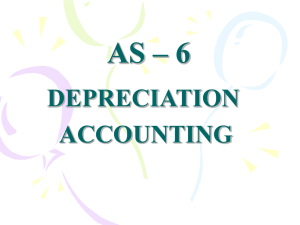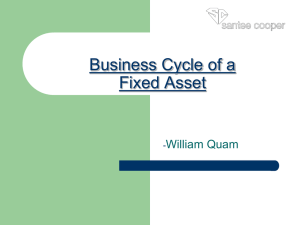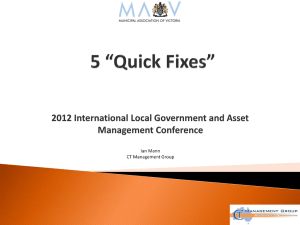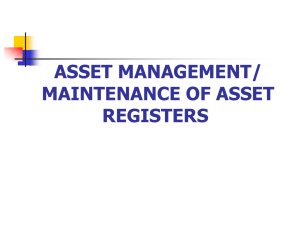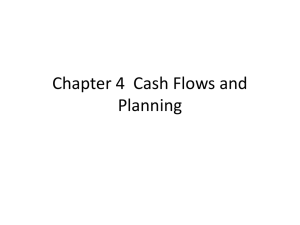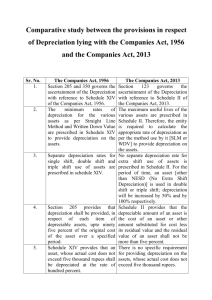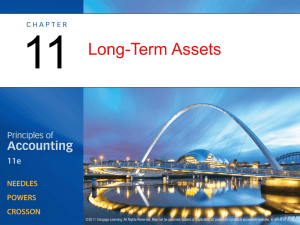Amendments On Fixed Assets As Per Companies
advertisement
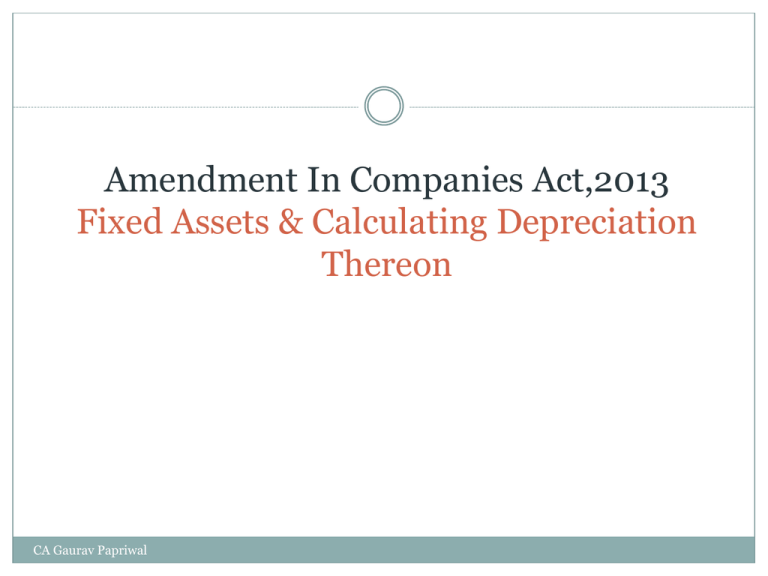
Amendment In Companies Act,2013 Fixed Assets & Calculating Depreciation Thereon CA Gaurav Papriwal Treatment of Depreciation as per the Companies Bill, 2013 As per the Companies Bill, Depreciation is the systematic allocation of the depreciable amount of an asset over its useful life (including amortization).The depreciable amount of an asset is the cost of an asset or other amount substituted for cost, less its residual value. The useful life of an asset is the period over which an asset is expected to be available for use by an entity, or the number of production or similar units expected to be obtained from the asset by the entity From the date of the Companies Bill coming into effect, the carrying amount (WDV) of the asset as on that date: a.Will be depreciated over the remaining useful life of the asset according to the Bill b. after retaining the residual value, will be recognized in the opening retained earnings where the remaining useful life is nil CA Gaurav Papriwal Treatment of Depreciation as per the Companies Bill, 2013 i. Like Section 205 Of The Companies Act,1956, Section 123 Of The Companies Act,2013 states that no dividend shall be declared unless some depreciation is provided in accordance with schedule II of the Companies Act,2013. ii. Schedule II of the Companies Act,2013, which provide Useful life to compute Depreciation as against the Rates of Depreciation. iii. The useful life of an assets is the period over which is an assets to be available for use by an entity, or the number of production or similar units expected to be obtained from the assets by the entity. iv. Useful Life Of An Asset - As notified for accounting purpose by a regulatory authority constituted under an Act of Parliament or by the Central Government shall be applied in calculating the depreciation to be provided for such asset. CA Gaurav Papriwal Treatment of Depreciation as per the Companies Bill, 2013 V. Where Plant & Machinery have been use in more than the useful lives as prescribed in the schedule II of the Companies Act, the remaining value has to be transferred to retained earning. For illustration Purpose the rates as prescribed for plant & machineries used in telecommunications and power sector are discussed. Nature Of Assets Useful Life Depreciation Rate As Per Companies Act,2013 Depreciation Rate As Per Companies Act,1956 Nature Of Assets As Per Companies Act, 1956 Plant & Machinery Used in Telecommunication Tower 18 Years 5.55% 5.28% Continuous Process Plant Plant & Machinery Used in generation transmission of power 40 Years 2.5% 5.28% Continuous Process Plant Wind Power Generation Plant 22 Years 4.54% 5.28% Continuous Process Plant Electric Distribution Plant 35 Years 2.85% 5.28% Continuous Process Plant Water Distribution Plant 30 Years 3.33% 5.28% Continuous Process Plant CA Gaurav Papriwal S No The Companies Act, 1956 The Companies Act-2013 1 Section 350 governs the ascertainment of depreciation with reference to Schedule XIV Schedule II of the Companies Bill 2013 contains the provisions for “Useful lives to Compute Depreciation” 2 The Companies Act, 1956 requires depreciation to be provided on each depreciable asset so as to write-off 95% of its original cost over a specified period. The remaining 5% is treated as residual value. The depreciable amount of an asset is the cost of an asset or other amount substituted for cost, less its residual value (generally not more than 5%) 3 Schedule XIV provides separate depreciation rates for double shift and triple shift use of assets No separate rates are prescribed for extra shift depreciation. For the period of time an asset [other than NESD (No Extra Shift Depreciation)) is used in double shift, depreciation will increase by 50% and by 100% in case of triple shift working. 4 The Schedule XIV to the Companies Act 1956 prescribes the rates of Straight Line Method and Written down Value at which depreciation on various assets need to be provided. Only useful life is provided therefore the entity is required to calculate the appropriate rate of depreciation as per the method used by it. CA Gaurav Papriwal S No The Companies Act, 1956 5 Unit of production (UOP) method for The useful life of an asset can be the calculation of depreciation is not allowed as number of production or similar units per circular issued by MCA. expected to be obtained from the asset. This indicates that a company may be able to use UOP method for depreciation. 6 Assets whose actual cost does not exceed Rs. There is no specific requirement for 5000/ - are depreciated @ 100%. providing depreciation on assets whose actual cost does not exceed Rs.5000/-. 7 Treatment for Depreciation on intangible Assets No separate depreciation rate is prescribed was notified by MCA in its circular dated for Intangible assets. The same will be 17th April 2012. governed by accounting Standards. CA Gaurav Papriwal The Companies Act-2013

